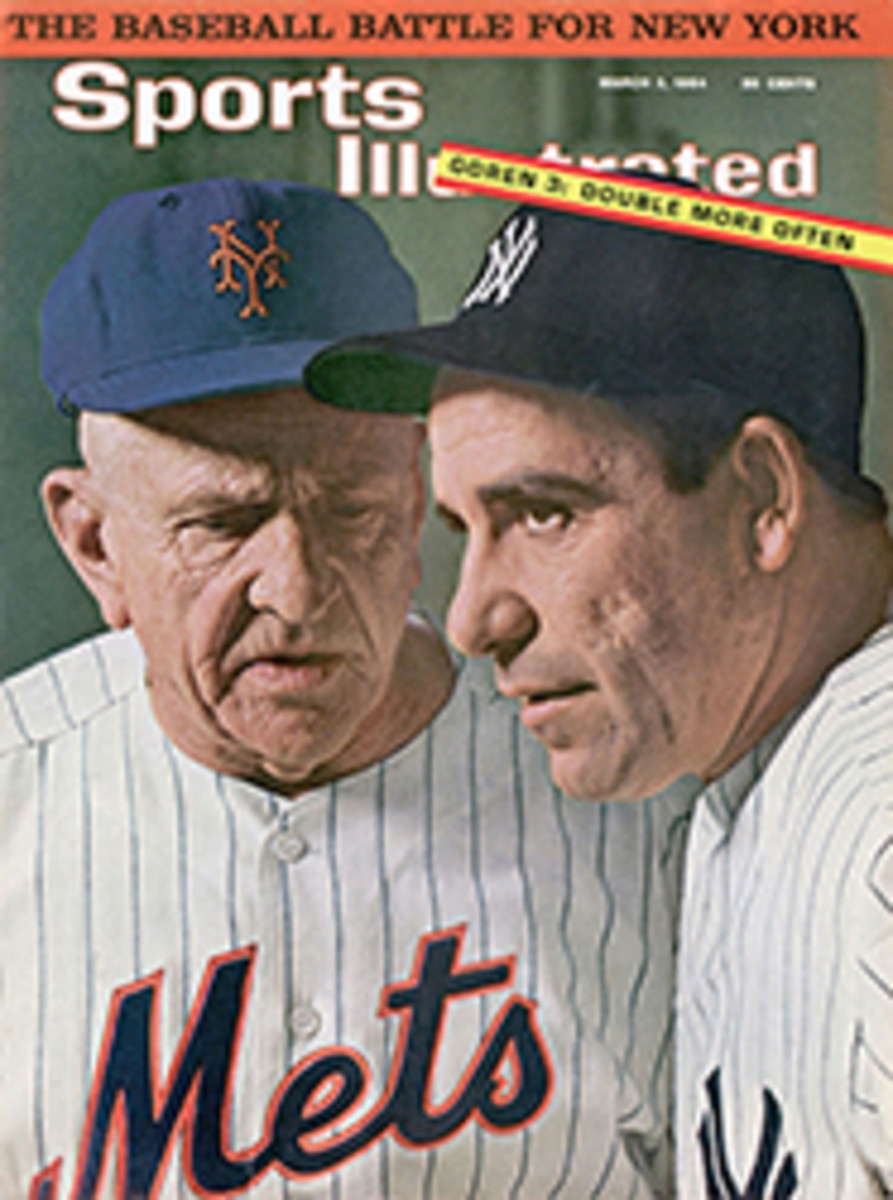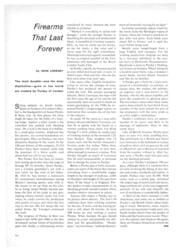
Firearms That Last Forever
Sitting sedately on South Audley Street in the heart of London's May-fair is the headquarters of James Purdey & Sons, Ltd. At first glance the shop might be taken for the lobby of a hunting lodge. Against a pillar stands a big varnished box packed with shooting cases. On a wall is the head of a buffalo. In a small glass counter, displayed like fine jewelry, are several handsomely engraved guns. They are Purdeys, the most distinctive firearms in the world. In the 150-year history of the company, 27,324 Purdeys have been created—each with the precision of a Swiss watch—and about half are still in use today.
The Purdey firm has been an institution among sportsmen since the reign of George III. Its founder, James Purdey, was a London gunmaker's son with a rare talent for the craft of his father. By 1814 he had earned a reputation for unsurpassed meticulousness among Britain's sporting gentry and, with it, the means to set up shop on his own. In so doing, James Purdey became perhaps the first of his trade to put gunmaking almost entirely under one roof where he could control the production and quality of every part from the first step to the last. His son James (he was called James the Younger) continued the work.
The progress of Purdey & Sons was rapid in the 1870s and 1880s as the firm developed various forms of hammerless guns and, finally, a self-opening action, considered by many shooters the most reliable in existence.
"Method is everything in action and thought," wrote the younger Purdey in describing his personal and professional ideals. A monolith of Victorian respectability, he had an astute eye for horses, an ear for music, a fine voice and a clever nose for the right associations. Monocled and extravagantly mustached, he was an original member of the Constitutional and belonged to the Royal London Yacht Club.
At Purdey's death, the business passed to sons Athol and Cecil and, in turn, to Athol's sons, Tom and Jim, who ran the firm until some nine years ago.
Like many other English institutions trying to survive the changes of time, Purdey's has produced the person to tackle the task. The present managing director, Harry Lawrence, has been with the firm since the age of 14, and he still occasionally dons an overall to check on actual gunmaking. In the 1930s he improved Purdey's single-trigger action, an innovation that remains one of the best in the industry.
As quick off the mark as a man after grouse, 64-year-old Harry Lawrence can also be as gentle with his hands as a woman washing bone china. For King George V's silver jubilee, he made a pair of working models of the monarch's 12-bore Purdeys. They weighed only 13 drams each, and the barrels measured a fraction under five inches. When fired, they expelled 2.02 grains of dust shot, about enough to massacre a mouse. Tom Purdey thought so much of Lawrence that he tried unsuccessfully to persuade him to change his name to Purdey.
Before a Purdey gun is built, measurements are taken of the buyer that include everything from a comfortable trigger length to the strength of each eye, width of shoulders and height of the eyes from them. If the buyer is in England, Purdey prefers to take measurements at its shooting grounds outside London where coaches observe customers in action.
Anyone who orders a Purdey has to be patient about delivery. The firm's 50 craftsmen have been working overtime for the last 15 years, and the waiting period is still about 24 months. At least 600 hours go into making a typical Purdey. When finished, the gun should outlast its owner and probably his children and his grandchildren. "Purdey guns," says Lawrence, "embody the sentiment of constantly striving for an ideal."
Lawrence personally selects wood for the stocks from the Dordogne region of France, where the walnut is noted for its fine color and grain. Each block costs about $45 in France, and is aged five years before being used.
Barrels come rough-forged from a large English steel company. For the working mechanism, forgings are done by a two-man subsidiary in the market town of Droitwich, Worcestershire. Handwork is done at Purdey's Padding-ton factory at Irongate Wharf alongside a London canal basin. Like a jackdaw's secret horde, myriad chisels, hammers and files lie on benches.
A Purdey gun is built by a team composed of a barrelmaker, an actioner, an ejector man, the stocker, the polisher, an engraver and a man known as the finisher, who fits the pieces together and gives the woodwork its glowing gloss. The last process alone takes three weeks and is done entirely by bare hand. Every member of the team initials his part of the production with the same pride as an artist might a masterpiece.
Purdey's craftsmen serve an apprenticeship of six years, and there is no shortage of applicants. Once in, they rarely leave.
Like all British firearms, Purdey guns have to pass two strict proofing tests. The proofmark on a British gun barrel is as necessary as the hallmark on a piece of gold or silver, and no gun can be sold or offered for sale in Britain or exported from the country without it. After factory tests, a Purdey must also pass tests on the shooting grounds.
In a year, Purdey's produces 150 new guns, although there is a continual flow of work involving the fitting of new barrels and stocks, overhauls and repairs. A simple Purdey may cost $1,540. With extras such as a pistol grip, ventilated rib, engravings of acorns and oak leaves, dogs and birds (or, as one man suggested, portraits of his wife and himself), the cost of excellence is considerably higher.
A third of the firm's business is with Americans, and many are as faithful as Purdey's old British clients about keeping in touch. Mementos, notes, reports and even an occasional trophy pour into South Audley Street from the jungles of India and the frozen arctic wastes. Wherever the country and whatever the game, there are Purdeys being fired around the world.

